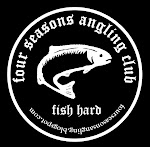
Entomology is the scientific study of insects. At some 1.3 million described species, insects account for more than two-thirds of all known organisms, date back some 400 million years, and have many kinds of interactions with humans and other forms of life on earth. Entomology is rooted in nearly all human cultures from prehistoric times, primarily in the context of agriculture, but scientific study began only as recently as the 16th century. The list of entomologists through recorded history is enormous, and includes such notable figures as Charles Darwin, Vladimir Nabokov, Karl von Frisch, and two-time Pulitzer Prize winner E. O. Wilson.


Mayflies are insects which belong to the Order Ephemeroptera (from the Greek ephemeros = "short-lived", pteron = "wing", referring to the short life span of adults). They have been placed into an ancient group of insects termed the Palaeoptera, which also contains dragonflies and damselflies. They are aquatic insects whose immature stage (called naiad or, colloquially, nymph) usually lasts one year in freshwater. The adults are short-lived, from a few minutes to a few days depending on the species. About 2,500 species are known worldwide, including about 630 species in North America.
Common names for mayflies include "dayfly", "shadfly", "Green Bay Flies", "Canadian soldier", "lake fly", and "fishfly". The mayfly belongs to group 1 taxa, or pollution–sensitive animals. This means if mayflies are in or around the water, the water should be of a good quality.


Caddisflies, sedge-flies or rail flies (Order Trichoptera, from Greek trich, "hair", and ptera, "wings") are small moth-like insects having two pairs of hairy membranous wings. They are closely related to Lepidoptera (moths and butterflies) which have scales on their wings, and the two orders together form the superorder Amphiesmenoptera. Caddisflies have aquatic larvae and are found in a wide variety of habitats such as streams, rivers, lakes, ponds, spring seeps, and temporary waters (vernal pools). The larvae of many species make protective cases of silk decorated with gravel, sand, twigs or other debris.

Plecoptera are an order of insects, commonly known as stoneflies. There are some 1,700 recorded species worldwide[citation needed], and new ones are still being discovered. Stoneflies are believed to be one of the most primitive groups of Neoptera, with close relatives identified from the Carboniferous and Lower Permian geological periods, while true stoneflies are known from fossils only a bit younger. The modern diversity however apparently is of Mesozoic origin. Plecoptera are found in both the Southern and Northern hemispheres, and the populations are quite distinct although the evolutionary evidence suggests that species may have crossed the equator on a number of occasions before once again becoming geographically isolated. All species of Plecoptera are intolerant of water pollution and their presence in a stream or still water is usually an indicator of good or excellent water quality.

* above are facts I stole from the public library, wikipedia, and other websites - thief.






No comments:
Post a Comment